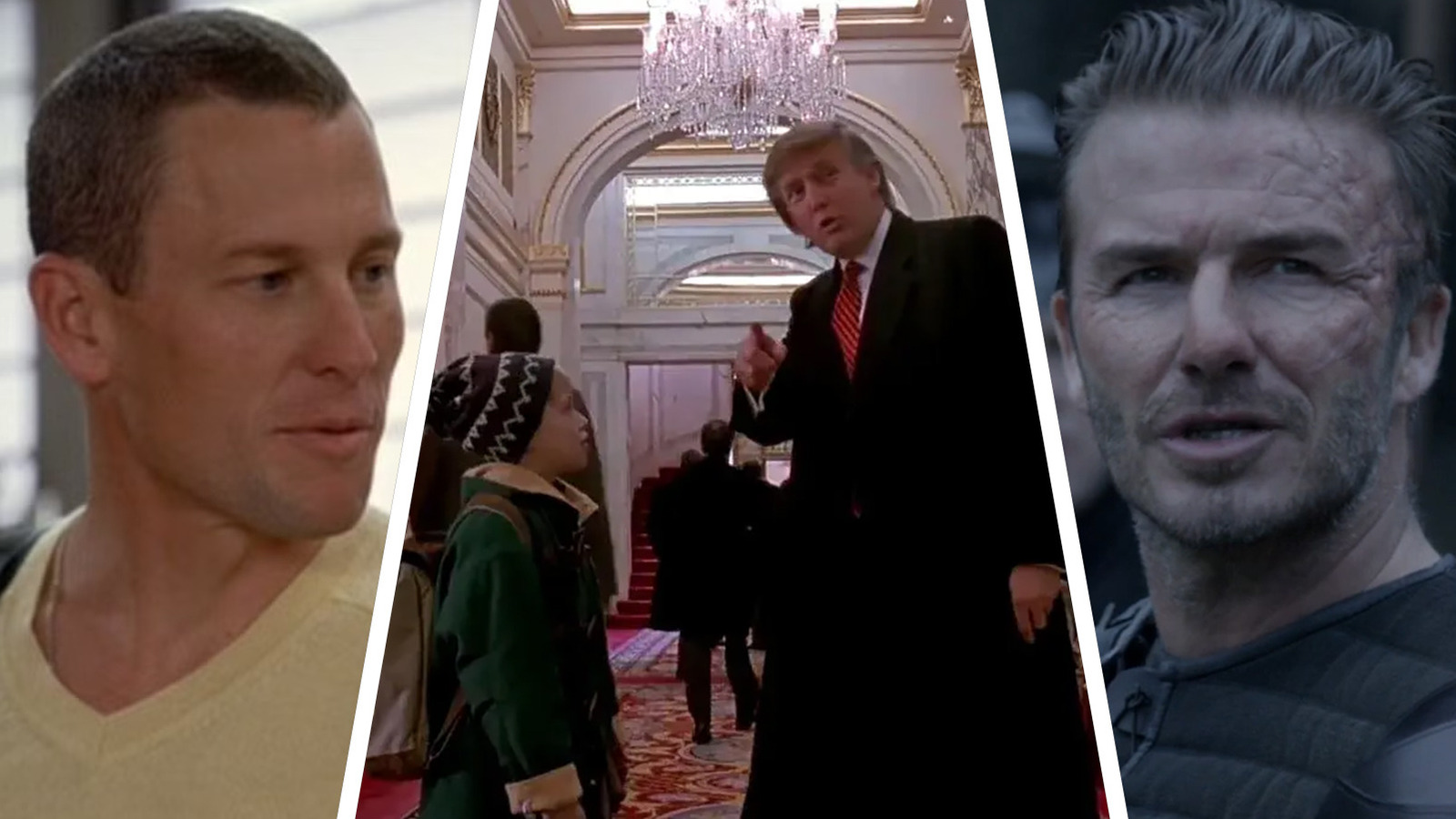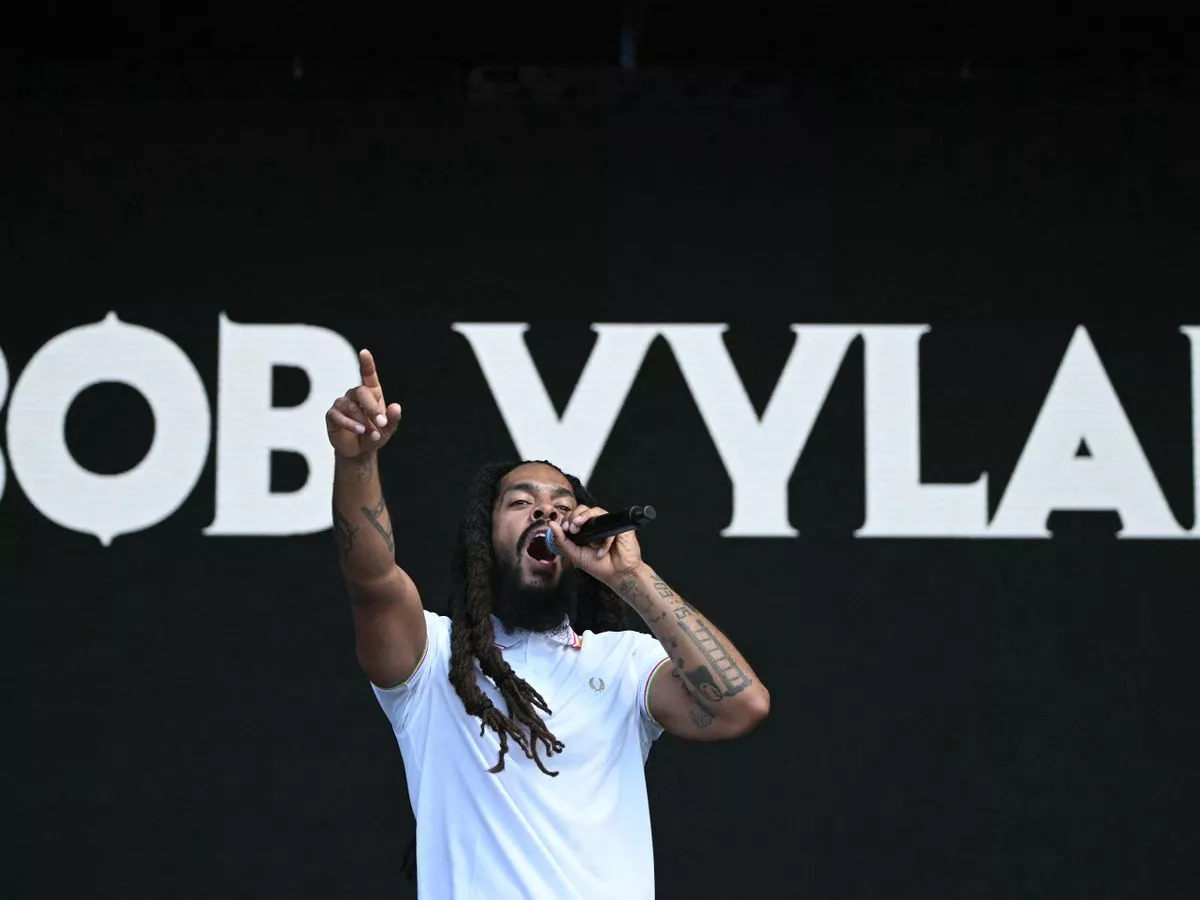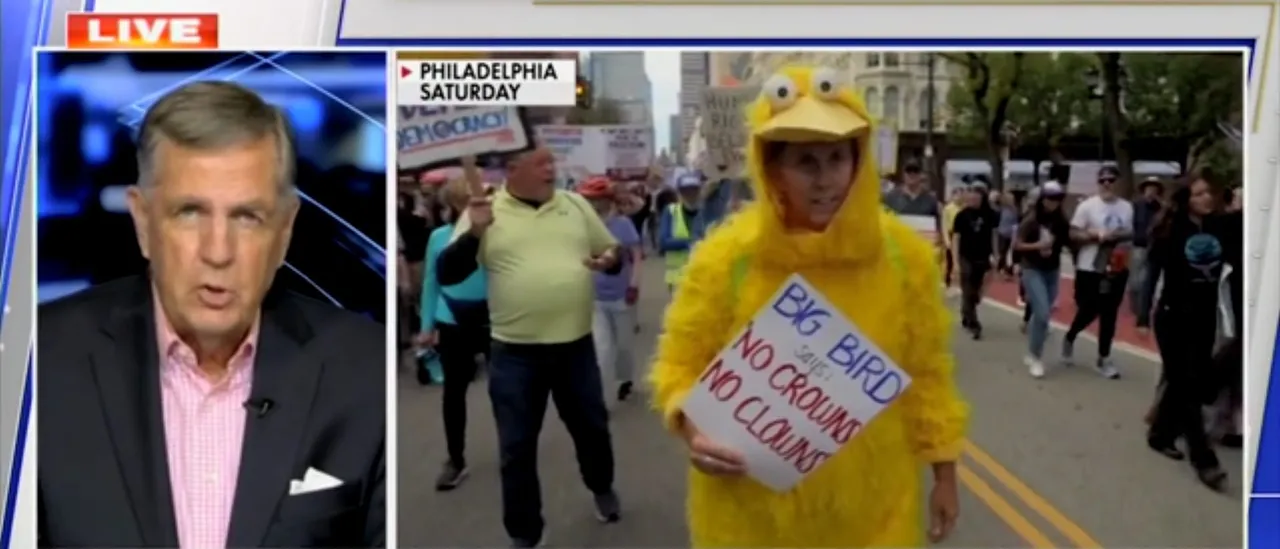Copyright /FILM

Cameos are meant to be fun, little treats for viewers. They can help flesh out a film's world, like how "F1" with Brad Pitt has a slew of appearances from real-world racers. They might be so quick you barely even register a famous face has shown up on screen, or they'll quickly elicit a chuckle before getting back into the actual story. Unfortunately, not every film knows how to handle a cameo well. Sometimes, you're deep within a story and then completely pulled out of it because an A-list actor showed up for five seconds. Maybe it's immediately clear that an actor only got their cameo because they're friends with the director. Their scene may only last a few seconds, but some wonky line readings can ruin what was otherwise a great time. Plenty of bad movies are accompanied by awful cameos, however, we want to examine otherwise decent films that are brought down at least a full star on Letterboxd because a famous face just needed to show up. The next time you watch these movies, see how much of an "ick" you get when these cameos occur. After a climactic shootout in "Django Unchained," the titular Django (Jamie Foxx) is sold once more into slavery and has to outwit some pretty dim-witted Australians. He does precisely that, as well as free some slaves and head back to Calvin Candie's (Leonardo DiCaprio) property to save Broomhilda (Kerry Washington). It would all be a perfectly thrilling sequence if it wasn't for director Quentin Tarantino's cameo and perhaps the most atrocious Australian accent put to film. Tarantino is known for popping up in his own movies going all the way back to "Reservoir Dogs." Sometimes, he gives himself a pretty meaty role, which can be seen as self-indulgent but is usually harmless enough. However, his "Django Unchained" role takes things a step too far. It's distracting for a pivotal moment, especially with Tarantino not really being able to do the Australian accent. It breaks your immersion and makes you wonder why he didn't just find an actor who could do the accent well. The only thing this cameo has going for it is when Django's handed a pistol, and he promptly shoots two of the Australians. For Tarantino's character, he shoots a bag he's carrying filled with dynamite, blowing him to smithereens. It's like payback for making the audience sit through his line readings. "Rogue One" represented a different path "Star Wars" could take. It could focus on characters outside of the Skywalker family and tell grittier stories, really diving into the "Wars" aspect of "Star Wars." Plus, we have "Rogue One" to thank for the excellent "Andor," so it really is one of the better "Star Wars" films of the 21st century. It's just a shame that it also functions as a harbinger of what's to come due to the digital recreations of Carrie Fisher's Princess Leia and Peter Cushing's Grand Moff Tarkin. Cushing passed away in 1994, and Fisher actually died shortly after "Rogue One" came out in theaters. Regardless, there would've been no way for an older Fisher to portray a pre-"New Hope" Leia or for Cushing to return as Tarkin rather than simply casting actors who kind of look like them. But "Rogue One" found a way, by recreating their likenesses digitally. It's an uncanny effect that pulls the audience out of the movie. You're aware that you've just been taken away from this desolate war story so that the movie could jangle cinematic keys in front of your face to make you remember actors you like. The effects were rough around the edges in 2016. However, advances in AI and deepfakes have made such facsimiles a more pressing concern. Raising actors from the dead in this way raises all kinds of ethical questions, even if a production gets approval from the deceased's family. "Rogue One" opened floodgates that could've stayed closed. Before he had a career in politics, Donald Trump was a certified member of SAG, which usually manifested as various cameos when a production needed a rich guy in some capacity. Arguably, his most famous (and worst) cameo comes in "Home Alone 2: Lost in New York." Kevin McCallister (Macaulay Culkin) has once again been separated from his family, so he checks into the Plaza Hotel. He asks Trump where the lobby is, and Trump points him in the right direction before going on his way. But not before taking one last glance at the random kid all by himself in a hotel. In light of enacting contentious policies as president, it's safe to say many are off-put by Trump's cameo in a beloved Christmas classic. There's also the matter of how his appearance came to be. The film's director, Chris Columbus, would later explain that Trump effectively bullied his way into a cameo. They paid all necessary fees to film the shot in the Plaza Hotel, which Trump owned at the time, but then he demanded a role. Trump had many film cameos before becoming president, including "The Little Rascals," "Zoolander," and "Wall Street: Money Never Sleeps." However, there's just something that feels particularly egregious about his "Home Alone 2" cameo. It's unnecessary and self-indulgent, and while plenty of people want to watch "Home Alone 2" around the holidays, they undoubtedly cringe when coming up on this part now. Venom (Tom Hardy) could've been in the final climactic battle of "Spider-Man: No Way Home." It certainly would've been a better use of the character rather than showing up in the post-credits scene hanging out in a bar. He has zero impact on the plot, as the scene follows up the post-credits moment in "Venom: Let There Be Carnage," where Eddie's transported into the Marvel Cinematic Universe. It felt like that was setting up something important, but ... nope! Sony's Spider-Man Universe is filled with villains with no hero to fight. The scene in "Let There Be Carnage" felt like something was finally going to happen with Venom fighting his archenemy in the near future. However, "No Way Home" came out, and Eddie's still at a bar, completely separate from the action. As if to add insult to injury, he simply gets transported back into his original reality. He does leave a small portion of the Venom symbiote behind, suggesting it could latch onto someone in the MCU to turn them into Venom. But who knows when (or if) that's going to happen? Sadly, this is a common occurrence in an ever-expanding franchise that wants to tee up new characters without having a clear vision of how to use them. Many Marvel post-credits scenes have never paid off, and with "Venom: The Last Dance" seemingly being Hardy's swan song as the character, all we're left with is his weird excursion into another reality. "Zack Snyder's Justice League" is absolutely better than the theatrical cut. It's effectively a love letter for fans who campaigned to see what Snyder's true vision for the project would've entailed, but reportedly, Snyder also used the release to film some extra scenes to pad out the already excessive four-hour runtime. This seemingly includes moments featuring Martian Manhunter (Harry Lennix), who hadn't been seen in the DC Extended Universe up until this point, and we'll never see him again. The director's cut includes a scene where Martha Kent (Diane Lane) has a heartfelt conversation with Lois Lane (Amy Adams), but it's revealed it was actually Martian Manhunter as Martha. It's a nonsensical twist because now you have a random alien telling Lois to "come back to the living" and not hide away following Superman's (Henry Cavill) death rather than someone she actually has a connection with. The second comes when Martian Manhunter appears to Bruce Wayne (Ben Affleck) at the very end, offering to help fight Darkseid (Ray Porter) later. But why not help them fight Steppenwolf (Ciarán Hinds) now? They're useless scenes that only function to give fans a taste of what could've been. Snyder had plans for future "Justice League" movies that would've seen Darkseid finding the Anti-Life Equation as well as Superman and Lois having a child who would've become the new Batman. It's ambitious but also a good reminder that directors should be aware they may not always get a chance to make that sequel and should just make the movie they want to make now. If Martian Manhunter was key to the DCEU's future, he should've been introduced a lot sooner. "Furious 7" is a high point of the "Fast & Furious" franchise, offering a kinetic story as well as a touching tribute to the late Paul Walker, who died during production. However, things get off to a rocky start when Letty (Michelle Rodriguez) wins a drag race and is given prompts by a female racer played by Iggy Azalea. It's not the first time the franchise has given a pop star a cameo, as Rita Ora appeared in "Fast & Furious 6." Azalea's on the soundtrack, so someone must've thought it was a good idea to give her a small part. But there's nothing fancy about this cameo. Azalea was popular in 2015 when the film came out, but she also courted a lot of controversy for sporting a blaccent in her songs. That same accent is present in "Furious 7" when she walks up to Letty and says, "Hey, there's the girl I've heard so much about. Where you been at, ghost girl?" If it hurts to read that line in this article, just imagine how it sounds coming out of Azalea's mouth. It's probably worth mentioning that Letty experiences a panic attack and punches a guy immediately after speaking to Azalea, which, to be fair, is an appropriate response to the awful line reading. It's common for directors to cast their friends in their movies. It can be self-indulgent but may work out if the friend is actually a good actor. Sadly, that wasn't the case when Guy Ritchie cast his buddy, soccer legend David Beckham, in "King Arthur: Legend of the Sword." Beckham can kick a ball around, but even with minimal lines, he sticks out like a sore thumb, especially when he has a giant scar across his normally beautiful face. Honestly, it could've worked out if Beckham had appeared in a less conspicuous scene. Beckham plays Trigger, one of the guards looking over the sword in the stone. He's the one who confronts Arthur (Charlie Hunnam) when he seeks to wield Excalibur. Therefore, you have the most crucial component of the Arthurian legend, and Beckham's Trigger is barking orders to use both hands. When Arthur finally succeeds in pulling out the sword, the scene cuts to Beckham's astonished face, completely pulling you out of this important moment, as if the film is saying "Hey, David Beckham's here, too! Pretty neat, huh?" In a moment that should've given Arthur full attention, we also have to be reminded that Ritchie has a bunch of famous friends. Bruce Willis could've played the villain in 2001's "Ocean's Eleven," but he had to settle for a quick cameo in "Ocean's Twelve" a few years later. He's part of a pretty controversial sequence where Danny Ocean (George Clooney) and his team are trying to pull off another heist. Part of the plan involves Tess (Julia Roberts) needing to pretend to be ... Julia Roberts. Depending on who you ask, it's either a delightfully meta moment or a cringey, nonsensical story beat. Either way, Willis playing himself, who thinks he recognizes his pal Julia Roberts, is a step too far. He's basically there to upend the plan, like pointing out that Roberts is left-handed when Tess signs something with her right hand. But most of his story beats feel like an excuse to gush over the action star, like Linus (Matt Damon) talking about figuring out the twist in "The Sixth Sense" but having the movie still work for him. The "Ocean's Eleven" franchise definitely isn't lacking in star power, and Willis' cameo feels like cramming in more actors just for the heck of it. Matt Damon has a surprising number of cameos. Despite being a leading man, he's still known to pop by for a quick shot in "EuroTrip" or "Thor: Ragnarok." Even in something like "Interstellar," where his role is a bit meatier than a standard cameo, it still materializes late in the film and comes as a shock to the audience. Arguably, the most egregious of all Damon's cameos comes in 2000's "Finding Forrester" where he plays Steve Sanderson, an attorney who informs Jamal (Rob Brown) that his mentor, reclusive author William Forrester (Sean Connery) has passed away and has left everything he owns to him. "Finding Forrester" is a perfectly good movie, but it's often overshadowed by "Good Will Hunting," which starred Damon in the lead role. Comparisons are inevitable, especially since both were directed by Gus Van Sant. They each involve a young genius receiving mentorship by a reclusive man and then realizing his full potential. "Good Will Hunting" is clearly the film most people remember and has stood the test of time, but when watching "Finding Forrester," Damon's cameo only reminds you that you could've spent that time watching "Good Will Hunting" instead. Not only that, but it's an emotional scene. Jamal's learning Forrester has died, but all you can think of when watching it is that Matt Damon's there. It undercuts the emotion to cram in a cameo when really anyone could've played the attorney. Lance Armstrong's cameo in "Dodgeball: A True Underdog Story" is one of those appearances that was perfectly fine when the movie came out in 2004 but has since become absolutely cringey with context. Peter LaFleur (Vince Vaughn) is getting a drink at a bar, ready to abandon his team at the final match of the dodgeball tournament. Armstrong appears to let him know he's rooting for him, and upon learning that Peter just wants to quit, Armstrong informs him that he wanted to quit too when he was diagnosed with cancer but overcame the odds to win the Tour de France five times. It was funny at the time with Armstrong putting Peter in his place and showing him how things can always get worse, but it's taken on a much different context in the years since. Allegations of Armstrong using performance-enhancing drugs date back to 1999, but they really gained in momentum starting around the 2010s when some of his teammates implicated him in doping going back to the 1990s. That means his historic Tour de France wins would've been tainted with him relying on drugs to outpace his competitors. When watching "Dodgeball" these days, Armstrong's speech to Peter comes across less like a guy who overcame the odds to make history and more like someone who had to cheat to get ahead. Maybe "Dodgeball" needs to add a scene where Armstrong offers Peter some performance enhancers, with Peter declining. Peter could insist real athletes don't need drugs to become champions.



